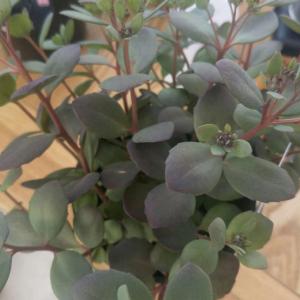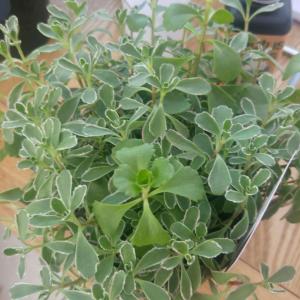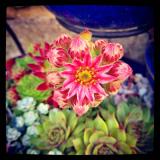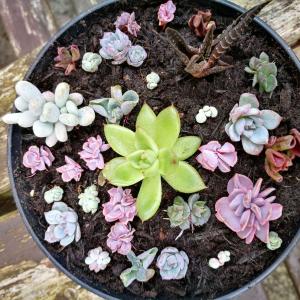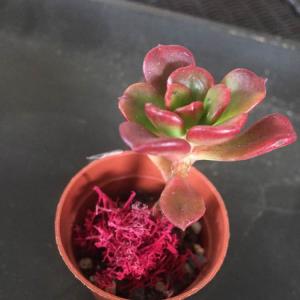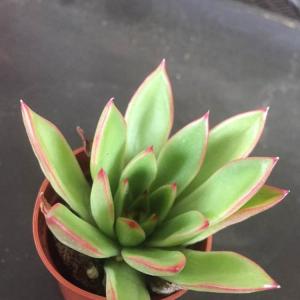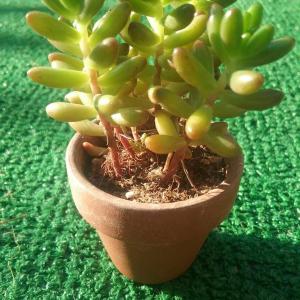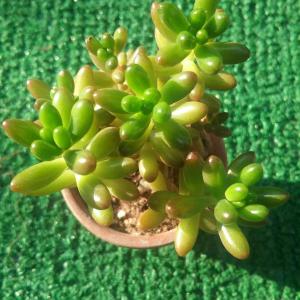求助
Ueca
2017年07月15日

What are these succulent species? I am especially interested in the Gasteria-like plants.
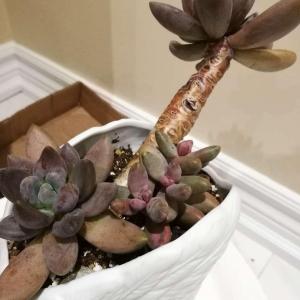
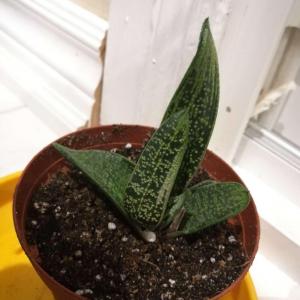
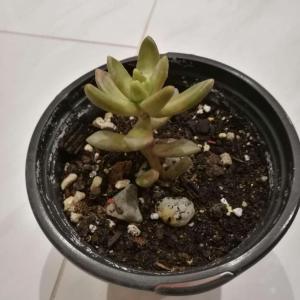

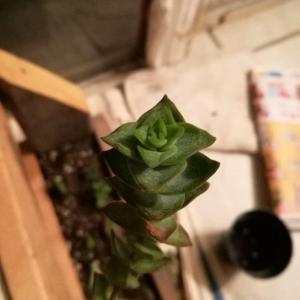

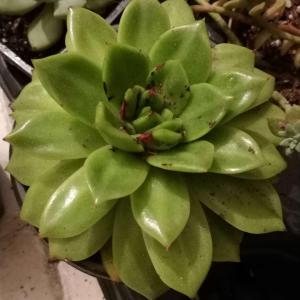
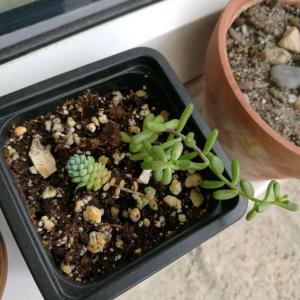
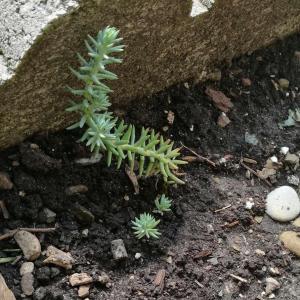









1
0
Abby Gill:The first and third are probably pachyphytum, the second one maybe haworthia, the fourth one echeveria lola, the seventh a type of echeveria, and the last one some kind of sedum. I'm not 100% sure though.
meriunkat:the second picture on the last row had a small sedum Morganianum "donkey tail"
成长记
Ueca
2017年07月14日

A new face pops up between its siblings.
I the background we can see the homemade pill bug trap; using a tofu box as the container, chewed succulent leaves as bait, and silica gel to deprive the insects of moisture.
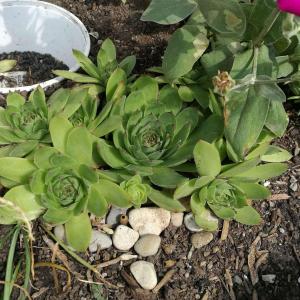
I the background we can see the homemade pill bug trap; using a tofu box as the container, chewed succulent leaves as bait, and silica gel to deprive the insects of moisture.

1
0
成长记
WHdeckgardener
2017年07月13日

I new added a "succulent.." in my "garden"
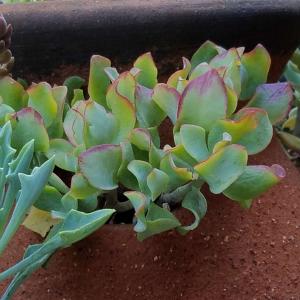

3
0
WHdeckgardener:Crassula ovata 'Undulata' Curly jade
求助
Yata
2017年07月12日

my succulent died today
but I don't know why...
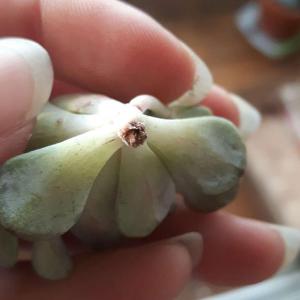
but I don't know why...

2
0
cclecombe:You might be able to regrow from the leaves though!
shirly mei:It look alive to me.
meriunkat:😞
求助
jbrennan
2017年07月12日

Just got these, dont know when to water or what type of succulent they are :/




1
0
sarajordan2993:the second photo looks like a *graptosedum*
sarajordan2993:1st looks like a type of Echeveria . 2nd looks like a type of sedum . Dont take my word for it . As for watering ... i judge mine by the soil . I stick my finger into the soil to about an inch then take it out . If there is soil on your finger , or it feels damp ... its not quite ready for watering . If they are going to be placed outdoors , make sure to acclimate them into the sun . if this isnt done , it could result in a sunburnt succ.
文章
Dummer. ゛☀
2017年07月12日

Family - Caryophyllaceae
Stems - To 50cm long(20-30cm tall), decumbent, rooting at lower nodes, herbaceous, somewhat succulent, mostly glabrous but with a single longitudinal line of pubescence. Pubescence hirsute to tomentose.
Leaves - Opposite, ovate(sometimes truncate at base), short-mucronate, petiolate. Blades to +2cm wide, +2cm long, glabrous, green above, lighter green below, entire. Petiole to +2cm long, sometimes winged, pubescent.
Inflorescence - Single flowers from leaf axils. Also terminal cymes of +3 flowers. Peduncles 1-3cm long, pubescent.
Flowers - Corolla white, rotate, 5-6mm broad. Petals 5, deeply notched and appearing as 10, glabrous, to 2mm long, free. Petal lobes oblong. Stamens typically 3-5, attached at base of ovary, alternating with petals. Styles 3, spreading. Sepals 5, free, to 5mm long, pubescent with glandular-tipped hairs, ovate-lanceolate, green. Capsules to +6mm long, 4mm wide, glabrous, with +/-15 seeds. Seeds 1mm in diameter, tuberculate, rotund.
Flowering - Typically March - November, but can flower all year.
Habitat - Moist shaded locations.
Origin - Native to Eurasia.
Other info. - This plant has spread rapidly throughout most of the U.S. and the Americas. The calyx is persistent and the fruits stick to clothing, hair and skin and are thus carried everywhere. The plant can be eaten but has a rank smell when first picked (at least to me).
If the stem is carefully bent side-to-side and then pulled apart, the elastic vascular tissue can be seen. This is a good way to help identify the plant.
Stems - To 50cm long(20-30cm tall), decumbent, rooting at lower nodes, herbaceous, somewhat succulent, mostly glabrous but with a single longitudinal line of pubescence. Pubescence hirsute to tomentose.

Leaves - Opposite, ovate(sometimes truncate at base), short-mucronate, petiolate. Blades to +2cm wide, +2cm long, glabrous, green above, lighter green below, entire. Petiole to +2cm long, sometimes winged, pubescent.
Inflorescence - Single flowers from leaf axils. Also terminal cymes of +3 flowers. Peduncles 1-3cm long, pubescent.
Flowers - Corolla white, rotate, 5-6mm broad. Petals 5, deeply notched and appearing as 10, glabrous, to 2mm long, free. Petal lobes oblong. Stamens typically 3-5, attached at base of ovary, alternating with petals. Styles 3, spreading. Sepals 5, free, to 5mm long, pubescent with glandular-tipped hairs, ovate-lanceolate, green. Capsules to +6mm long, 4mm wide, glabrous, with +/-15 seeds. Seeds 1mm in diameter, tuberculate, rotund.

Flowering - Typically March - November, but can flower all year.
Habitat - Moist shaded locations.
Origin - Native to Eurasia.
Other info. - This plant has spread rapidly throughout most of the U.S. and the Americas. The calyx is persistent and the fruits stick to clothing, hair and skin and are thus carried everywhere. The plant can be eaten but has a rank smell when first picked (at least to me).
If the stem is carefully bent side-to-side and then pulled apart, the elastic vascular tissue can be seen. This is a good way to help identify the plant.
0
0
成长记
Ryry0521
2017年07月11日

I new added a "What succulent is this?" in my "garden"
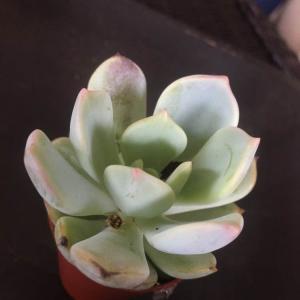

1
0
Ryry0521:Thank you @meriunkat
meriunkat:maybe some kind of graptopetalum
求助
Laura Horak
2017年07月10日

What kind of succulent is this?
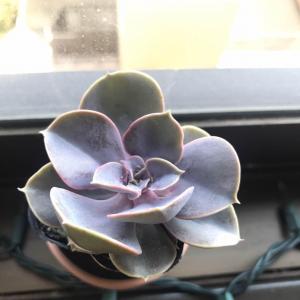

3
0
Abby Gill:@Ryry0521 Tap the "Release" button at the bottom of the screen when you first enter the app (you will see a picture of a camera next to it). You will be presented with a few choices, one of them being "Question". Tap on it and ask your question, attaching a picture relating to your question as well.
段子手储备干部:中文学名
紫珍珠
拉丁学名
Echeveria ‘Perle von Nürnberg’
别称
纽伦堡珍珠,丁香(叶片无中折线的形态)
二名法
E. 'Perle von Nürnberg'[1]
Ryry0521:How do you get the help thing? Because I need help finding my succulent names, but I don't know how to put the "help" thing on.
meriunkat:Echeveria Perle Von Nurnberg



